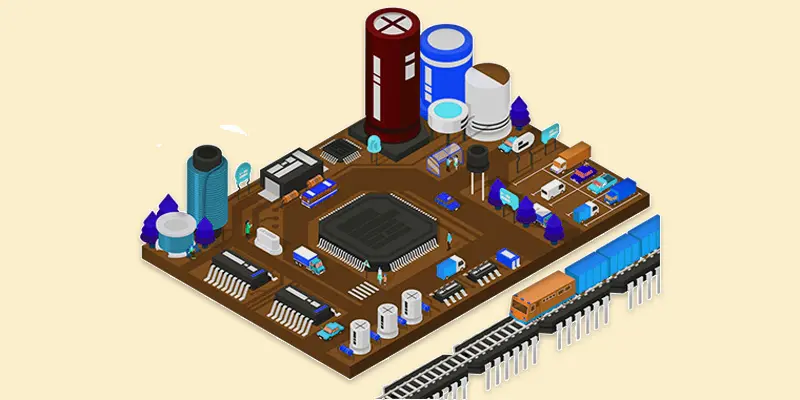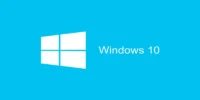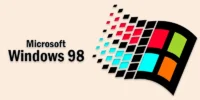How Embedded Firmware Works | Real-Life Examples and More
Published: 6 Jun 2025
Embedded Firmware
Embedded firmware is a crucial part of modern electronics, controlling everything from washing machines to medical devices. You might wonder—how can tiny chips make smart decisions without any help. Many developers struggle to update, secure, or even access firmware once it’s deployed. Imagine opening a smart device and finding its brain hidden deep inside—that’s embedded firmware quietly doing all the work.
What is Embedded Firmware?
Embedded firmware is a type of software programmed directly into hardware devices to control their functions. It operates on microcontrollers or chips inside electronics and helps them perform specific tasks. Unlike regular software, embedded firmware runs with little to no user interaction and is often designed for a particular job.

How Embedded Firmware Works
Stored in the Device
- Embedded firmware is saved inside the hardware of a device—usually in memory like ROM or flash.
Runs When Powered On
- When you turn on the device, the firmware is the first thing that runs. It tells the device what to do.
Controls Hardware
- Firmware controls all the parts of the device—like buttons, sensors, lights, or motors. It gives them instructions.
Follows a Fixed Program
- It works like a tiny brain with a set of fixed instructions. For example, in a washing machine, the firmware tells it when to fill water, spin, and stop.
Keeps Working in a Loop
- After starting, the firmware constantly checks and controls the device. It runs in a loop until you turn the device off.
Examples of Embedded Devices
Smartphones
Firmware in action: Manages hardware like the touchscreen, camera, and battery. It also helps with communication between apps and hardware components.
Microwaves
Firmware in action: Controls the cooking time, power level, and buttons. It manages how the microwave heats food and how long it runs.
Washing Machines
Firmware in action: Regulates the water level, motor speed, washing cycles, and drying. It ensures the washing machine operates correctly based on the user’s settings.
Printers
Firmware in action: Controls the printing process, like feeding paper, ink usage, and communication with the computer.
Smart TVs
Firmware in action: Manages the display, connects to Wi-Fi, and runs apps. It helps the TV interact with other devices and streams content.

Automobiles
Firmware in action: Controls everything from engine performance to airbags and infotainment systems. It’s also used in advanced driver-assistance systems (ADAS).
Digital Cameras
Firmware in action: Controls the sensor, shutter, autofocus, and image processing. It also runs the interface for the camera’s settings.
Fitness Trackers
Firmware in action: Monitors steps, heart rate, and other sensors. It connects to your phone to sync data and send notifications.
Medical Devices
Firmware in action: Controls devices like pacemakers, insulin pumps, or thermometers to ensure proper function, health monitoring, and response to changes in the patient’s condition.
Smart Home Devices (e.g., Smart Thermostats)
Firmware in action: Manages heating/cooling, controls sensors (like motion or temperature), and communicates with other devices in the home.
Embedded Firmware vs. Software App
| Frequently updated, it can be done online. | Software Apps |
|---|---|
| Controls specific hardware functionality. | Performs tasks or provides services for users. |
| Stored in non-volatile memory (ROM, flash, EEPROM). | Installed on general-purpose devices (PC, mobile). |
| Updates are less frequent and usually complex. | Frequently updated, can be done online. |
| Uses minimal resources (memory, processing power). | Requires more resources (RAM, CPU). |
| Directly interacts with hardware. | Runs on top of the operating system (OS). |
| Microwaves, cars, smart TVs. | Instagram, Microsoft Word, and games. |
Why Embedded Firmware Is Important
- Controls hardware – It tells the device how to work.
- Runs devices – Helps devices start and function properly.
- Handles tasks automatically – Works in the background without user input.
- Fast and reliable – Gives quick and steady performance.
- Built for safety – Helps keep machines safe and secure.
- Custom-made – Designed for specific devices and tasks.
- Saves power – Works efficiently using less energy.

Conclusion About Embedded System Firmware
We’ve covered embedded firmware in detail. I recommend learning more about how firmware works if you’re interested in devices like smart appliances, cars, or wearables—it’s the hidden force that powers them all. Understanding it can help you fix, improve, or even build smart devices. It’s a great skill for students, tech lovers, or future engineers. Thus, continue to explore, maintain your curiosity, and remember to forward this information to friends who might benefit from it!
FAQS
Yes, firmware can be updated to fix bugs or add new features. Some devices update automatically, while others need manual updates. Always follow the device maker’s instructions when updating firmware.
An embedded system is a small computer built into a device to do specific tasks. It includes hardware and software working together. Examples are microwave ovens, washing machines, and smartwatches.
Embedded software is the code that runs inside an embedded system. It tells the hardware what to do and how to do it. It works with the firmware to control devices.
Low-level firmware and high-level firmware are the two primary varieties. Low-level firmware is difficult to modify and permanent. High-level firmware is easier to update and offers more features.
Embedded hardware is the physical part like the chip, board, or sensors. Firmware is the software stored inside the hardware that controls how it works. They must work together to make the device function.
An embedded version is a special, simplified version of software made to run on specific devices. It uses fewer resources and works only on that device. For example, Windows Embedded runs on ATMs or kiosks.
Embedded means built into something. For example, the software in a digital camera that controls the lens and buttons is embedded. It’s not seen by users but runs everything inside.
Firmware in a computer helps start the system and control basic hardware. The BIOS or UEFI is an example—it checks the parts like keyboard or memory before Windows loads. It stays stored on a chip inside the motherboard.

- Be Respectful
- Stay Relevant
- Stay Positive
- True Feedback
- Encourage Discussion
- Avoid Spamming
- No Fake News
- Don't Copy-Paste
- No Personal Attacks

- Be Respectful
- Stay Relevant
- Stay Positive
- True Feedback
- Encourage Discussion
- Avoid Spamming
- No Fake News
- Don't Copy-Paste
- No Personal Attacks





